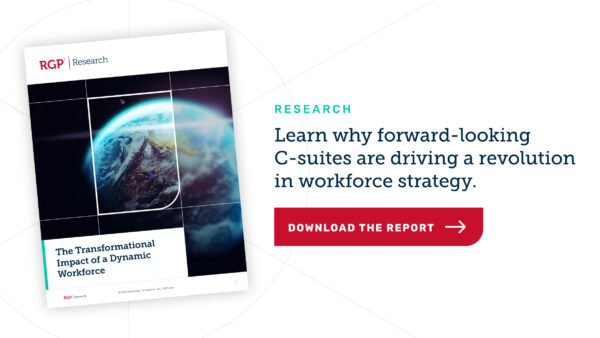The Labor Department’s December jobs report indicates that employers added 216,000 new jobs in December with 40% of the gains coming from the healthcare sector, which added 38,000 new positions in fields such as ambulatory healthcare services and hospitals. At first glance, this steady surge in hiring could be encouraging news for the healthcare industry, which has experienced acute business and clinical staffing shortages that have made it challenging, if not impossible, to execute mission-critical initiatives.
Could Increased Healthcare Hiring Alleviate Staffing Shortage Pain?
The continuing prominence of healthcare in driving new job additions in the U.S. labor market suggests a sustained demand for healthcare professionals. Although many healthcare organizations have seen their employment numbers return to pre-pandemic levels, the persistent effects of pandemic-related workforce shortages still linger. This is attributed to multiple factors, including regional workforce disparities, heightened healthcare needs of an aging population, specialized skill requirements, and the ongoing impact of the mental health crisis.
The emergence of new positions may not adequately counterbalance staffing shortages.
While the increasing job opportunities in healthcare offer some relief, they are unlikely to fully resolve the existing staffing challenges observed in the healthcare sector. Amidst the short-term gains in healthcare employment numbers, underlying systemic issues persist within the U.S. healthcare industry. According to the Association of American Medical Colleges (AAMC), the U.S. population is projected to grow by 10.6% to 363 million by 2034, with a staggering 42.4% increase in the population aged 65 and above.
Additionally, the U.S. may face a shortage of 54,100 to 139,000 physicians by 2033. Therefore, despite the current upsurge in job numbers, the increased demand projected within the U.S. healthcare ecosystem remains a significant challenge that these short-term gains in employment are unlikely to address adequately.
Labor Costs Put a Squeeze on Financial Health
Escalating labor costs in healthcare have a direct impact on multiple areas, including revenue cycle management, operational efficiency, technology advancements, and strategic planning for hospitals, healthcare providers, and payers alike.
High labor costs constitute a substantial portion of a healthcare organization’s expenses for both payers and providers. When these costs rise, they directly affect the overall financial health of hospitals and healthcare providers. The increased expenses lead to reduced profit margins, impacting the ability of payers and providers to invest in technological advancements or improved patient care services. Additionally, labor costs also impact the overall efficiency and productivity of the healthcare ecosystem. When facing budget constraints due to high labor expenses, providers typically reduce staffing levels or cut back on training programs.
Healthcare providers often struggle to balance rising costs with adequate revenue generation.
This reduction in workforce or inadequate training directly affects operational efficiency, leading to longer patient wait times, delayed care delivery, and increased administrative errors. This ultimately leads healthcare organizations to compensate for staffing shortages with aggressive technology implementation (s) such as automation or outsourcing with hopes of filling the staffing gap. However, these strategies require careful consideration to ensure they don’t compromise patient care quality or negatively impact staff morale.
Lastly, elevated labor expenses can create challenges in managing the revenue cycle effectively. Healthcare providers often struggle to balance the rising costs with adequate revenue generation. Delays in billing, coding errors, or inefficient claims processing due to staff shortages or high labor expenses can disrupt cash flow, impacting revenue collection and financial stability, and therefore put many healthcare organizations under immense financial pressure leading to sustainability challenges.
AI Remains Top of Mind for Hospitals and Healthcare Providers
A key factor in the coming year for healthcare providers is artificial intelligence and machine learning (AI/ML) and the critical determinants and challenges that must be addressed to fully assess and effectively implement generative AI as a solution for workforce shortages.
There’s consensus within the industry that generative AI holds transformative potential.
The argument supporting generative AI as a solution for workforce shortages in healthcare is multi-faceted. There’s a prevalent consensus within the industry that generative AI holds transformative potential across various healthcare facets like patient care, diagnostics, research, and education. This expectation fuels a surge for AI integration into workflows among payers, providers, and life sciences entities.
However, while recognizing its potential, several critical factors must be addressed to determine the scale and pace of AI adoption in healthcare such as regulatory compliance, ethical considerations, and accessibility issues as pivotal determinants governing the extent of AI integration across the healthcare landscape.
Despite its potential, only a small fraction of healthcare workers in a Gartner survey considered their jobs could be replaced by AI at present (11%), with a slightly higher percentage (15%) envisioning this replacement within the next five years. Their perspective underscores that AI primarily serves to enhance efficiencies and facilitate skill development within their existing roles, rather than replacing them outright. This suggests that while AI is seen as a tool for augmenting and improving existing workflows, its full-scale replacement of human healthcare roles remains a concept for the future, but likely not the present reality.
A Revolutionary Workforce Transformation Is Underway
All of these trends are occurring amid broader macroeconomic forces — and a profound shift in the makeup of the workforce. A global research study conducted by RGP in 2023 revealed a massive redistribution of talent and created a large pool of highly skilled independent workers.



